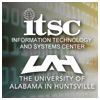The 2nd Generation Real Time Mission Monitor (RTMM) Development
| Title | The 2nd Generation Real Time Mission Monitor (RTMM) Development |
| Publication Type | Conference Paper |
| Year of Publication | 2009 |
| Authors | Blakeslee, RJ, Goodman, M, Hardin, DM, Hall, J, He, YM, Regner, K, Conover, H, Smith, T, Meyer, P, Lu, J, Garrett, M |
| Conference Name | American Geophysical Union |
| Date Published | 12/2009 |
| Conference Location | San Francisco, CA |
| Keywords | Visualization and portrayal |
| Abstract | The NASA Real Time Mission Monitor (RTMM) is a visualization and information system that fuses multiple Earth science data sources, to enable real time decision-making for airborne and ground validation experiments. Developed at the National Aeronautics and Space Administration (NASA) Marshall Space Flight Center, RTMM is a situational awareness, decision-support system that integrates satellite imagery and orbit data, radar and other surface observations (e.g., lightning location network data), airborne navigation and instrument data sets, model output parameters, and other applicable Earth science data sets. The integration and delivery of this information is made possible using data acquisition systems, network communication links, network server resources, and visualizations through the Google Earth virtual globe application. In order to improve the usefulness and efficiency of the RTMM system, capabilities are being developed to allow the end-user to easily configure RTMM applications based on their mission-specific requirements and objectives. This second generation RTMM is being redesigned to take advantage of the Google plug-in capabilities to run multiple applications in a web browser rather than the original single application Google Earth approach. Currently RTMM employs a limited Service Oriented Architecture approach to enable discovery of mission specific resources. We are expanding the RTMM architecture such that it will more effectively utilize the Open Geospatial Consortium Sensor Web Enablement services and other new technology software tools and components. These modifications and extensions will result in a robust, versatile RTMM system that will greatly increase flexibility of the user to choose which science data sets and support applications to view and/or use. The improvements brought about by RTMM 2nd generation system will provide mission planners and airborne scientists with enhanced decision-making tools and capabilities to more efficiently plan, prepare and execute missions, as well as to playback and review past mission data. To paraphrase the old television commercial “RTMM doesn’t make the airborne science, it makes the airborne science easier.” |
| URL | http://adsabs.harvard.edu/abs/2009AGUFMIN33A1026B |
- Log in to post comments
- Google Scholar




